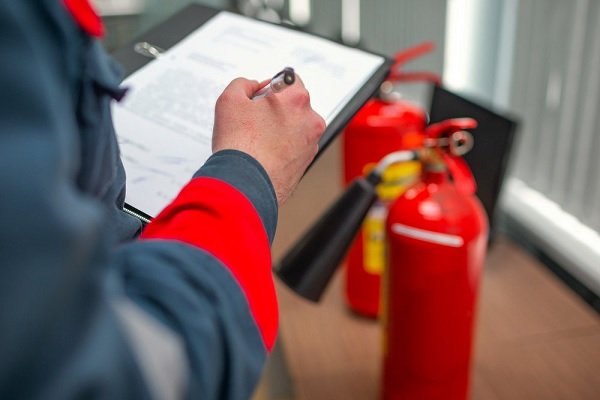What Is the Role of Fire Stopping in Building Construction?

Fire stopping is an essential component of building construction, acting as a vital mechanism to prevent the spread of smoke and fire. This proactive technique entails installing fire-resistant seals and barriers inside the building structure to prevent flames, heat, and smoke from passing between compartments or through apertures.
Fire stopping helps restrict the fire to its origin, reducing its propensity to spread quickly and minimising the hazards to inhabitants and property. Implementing fire-stopping measures is a critical component of a complete fire safety strategy, adding considerably to a structure’s overall resilience and protection during a fire emergency. This article will examine the importance of fire prevention and the numerous strategies to ensure building safety.
What Is Fire Stopping?
Fire stopping uses various materials and procedures to seal holes and cracks in fire-resistant walls and floors. This deliberate use of fire-resistant materials and seals is critical in maintaining the integrity of the fire-rated assembly. Fire stopping acts as a barrier and limits the unrestrained spread of fire, smoke, and hazardous gases by successfully sealing holes, voids, or penetrations in the building structure.
The objective is to develop a cohesive and continuous fire-resistant system that restricts the movement of these dangerous components, safeguarding both the occupants’ safety and the structural integrity of the building. This thorough approach to sealing probable locations of fire propagation is essential to building design and construction, significantly enhancing overall fire safety protocols.
Importance of Fire Stopping
The primary goal of fire stopping is to compartmentalise a structure, deliberately limiting the spread of fire from one location to another. This is accomplished by erecting resilient barriers to survive the impacts of fire, thereby halting its advance.
The planned use of fire-resistant materials and seals in walls, floors, and openings forms a containment system, limiting the uncontrolled flow of flames, heat, smoke, and hazardous gases. Fire suppression’s fundamental goal is to improve building occupants’ safety while minimising possible property damage by compartmentalising the fire. This key feature of fire safety is crucial in ensuring that a building stays resilient and its inhabitants have a higher chance of safe escape in a fire emergency.
Role in Building Safety
Fire stopping is critical for a building’s overall safety. In the unfortunate case of a fire, precisely designed fire stopping measures may save precious time. These systems successfully control the spread of fire, smoke, and hazardous gases, giving inhabitants a critical window to leave safely. Simultaneously, firefighters benefit from the controlled circumstances made possible by fire suppression, enabling them to confine and tackle the flames more efficiently. Strategically deploying fire-resistant barriers and seals is crucial in reducing the possible dangers of a fire emergency. Finally, adopting strong fire-fighting systems is a critical investment in the safety and well-being of tenants and first responders in the event of an unforeseen fire.
Methods of Fire Stopping
There are various techniques for stopping a fire, each with a distinct function in improving a building’s fire resistance.
Fire-Resistant Sealants
Joints and gaps in fire-rated materials including floors, ceilings, and walls are often sealed with fire-resistant sealants. These sealants maintain the integrity of the building’s fire barriers by keeping smoke and fire out.
Fire-Resistant Mortar
Fire-resistant mortar fills holes and cavities in masonry walls and concrete floors. It creates a thick, fire-resistant barrier that aids in the containment and prevention of fire spread inside the building structure.
Fire-Resistant Blankets and Wraps
Fire-resistant blankets and wraps enclose pipes, ducts, or cables that breach fire-rated walls or floors, therefore retaining the assembly’s fire resistance.
Fire-Resistant Doors
Steel doors are an important component of fire protection in building construction. These doors are built to resist high temperatures and prevent fire from spreading between compartments, adding to the building’s overall fire safety.
Compliance and Standards
Building regulations and standards must be followed to provide successful fire suppression. Building owners and builders must follow rules that outline the appropriate fire resistance ratings for various building parts and assemblies.
Testing and Certification
Fire-stopping materials and systems are subjected to extensive testing to determine their ability to survive fire exposure. Certification from recognised testing facilities ensures that they meet industry requirements.
In Summary
Indeed, fire stopping is critical in building construction because it effectively stops smoke and flames from spreading. Buildings may be reinforced to withstand the destructive effects of fire by using different techniques such as sealants, mortar, blankets, wraps, and fire-resistant doors. This protects lives and property.
Players in the building sector must recognise the importance of fire prevention and follow set standards. They actively contribute to establishing safer built environments for all inhabitants. Understanding and executing effective fire prevention measures not only complies with safety rules but also improves overall building resilience in the face of probable fire crises.
The importance of fire stopping in building safety cannot be over emphasized. It is an essential component of the overall endeavour to prioritise life safety and property protection in the built environment.


